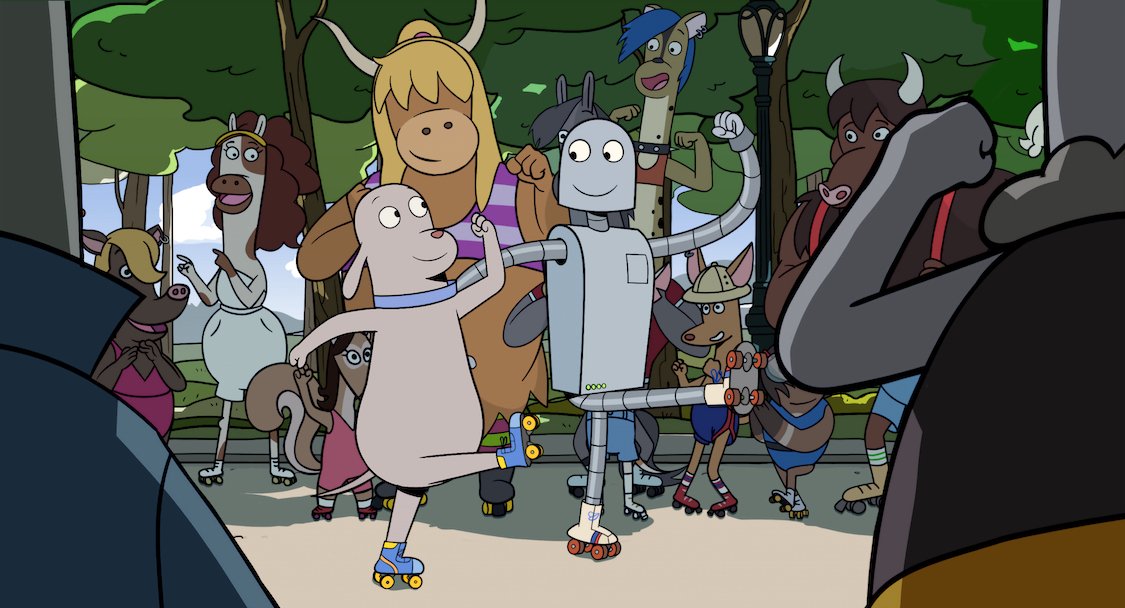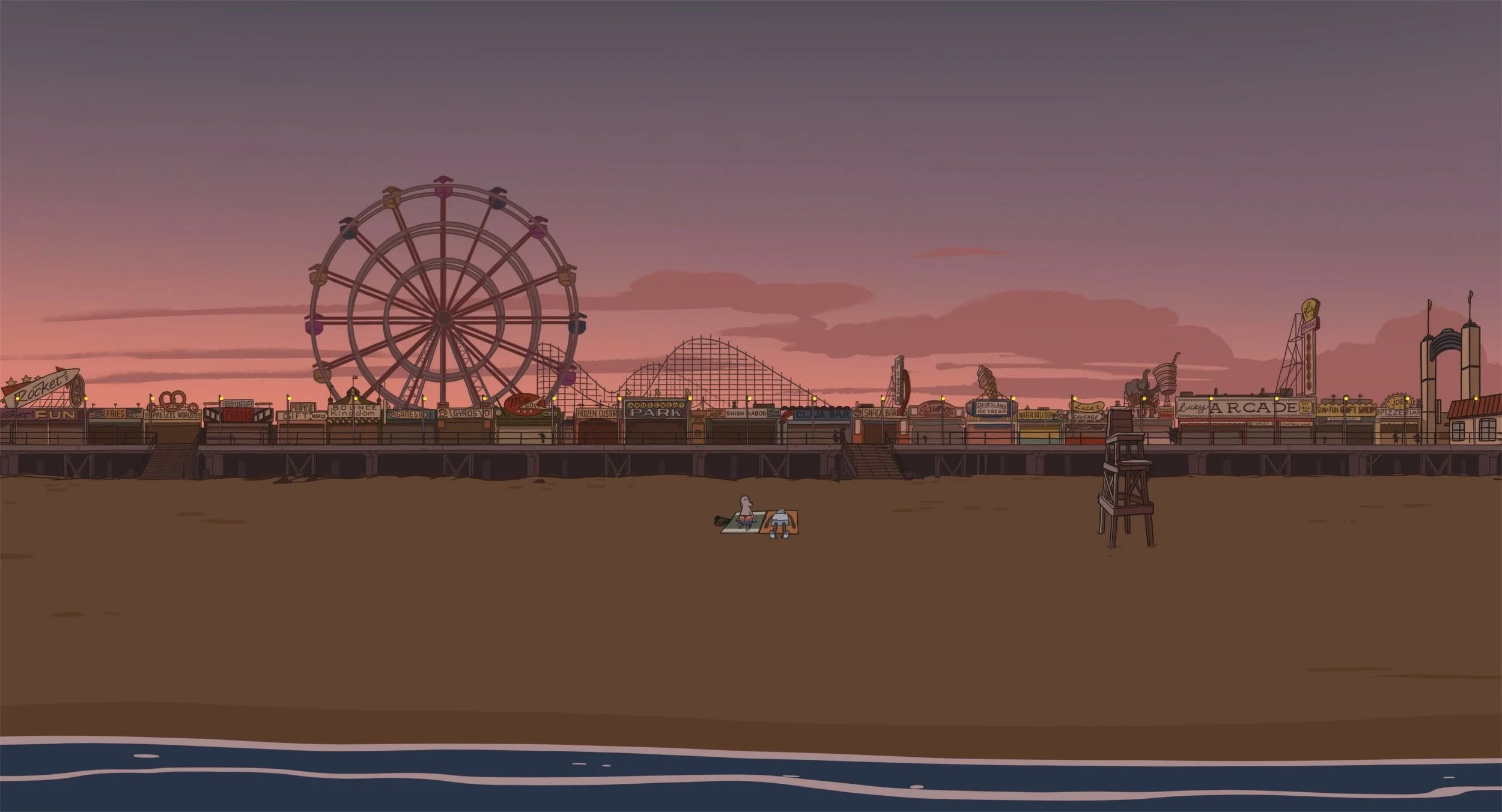‘Dreams’ Come True
Pablo Berger’s first foray into animation is simply perfection.
Robot Dreams
Director: Pablo Berger • Writer: Pablo Berger, based on the graphic novel by Sara Varon
Spain / France • 1hr 42mins
Opens Hong Kong June 20 • I
Grade: A+
Don’t get me wrong. I like Hayao Miyazaki’s films as much as anyone. When he’s on his game, few are better at that kind of thoughtful-provoking, visually arresting animation. However, his win for The Boy and the Heron at last year’s Oscars, over Pablo Berger’s perfect Robot Dreams, may not be the greatest Oscar crime ever, but it’s yet another baffling bungle and a demonstration of the Academy’s penchant for “Woops” voting. Heron was fine, far from Miyazaki’s best, but he keeps talking about retiring and his last Oscar came in 2003. It’s a Paul Newman win, or an Al Pacino. Just in case.
Spanish filmmaker Berger broke out in art circles back in 2012, with the creative – and dialogue-free – Blancanieves, a clever Andalusian spin on the legend of Snow White (with a touch of Red Riding Hood) that ends as grimly as the original fairy story did. Berger is about pictures, and he’s one of the best visual storytellers working today, so it’s no surprise that Robot Dreams is a masterclass on every level when it comes to art. Thing is, it’s a masterclass on narrative, character and thematic levels too. The simple, clean artwork in Robot Dreams belies the depth of its storytelling, which couches a mature exploration of friendship and the need for connection, loss, memory and acceptance that feels defiant for daring to end on a realistic note rather than a cloying, safe, Disney-approved one. It’s technically from 2023, but it’s making the rounds now, so I’m going out on a limb to say it’s the best animated film to hit theatres this year. Or it will be. And yeah, I’m aware Pixar has Inside Out 2 in the chamber.
Do not be put off the Cat I rating. Robot Dreams is indeed a family film, but it’s a family film in the way the best Pixar used to be. Up and Wall-E were ideal blends of genuine wit, deep messaging and vividly coloured shenanigans, making them eminently watchable for kids as young as four (I guess?) all the way to their grandparents. There was something in those for everyone, and they made their points without sacrificing POV or exploiting merchandising and sequel potential (though the way things are going at Pixar…). Robot Dreams duplicates that all-ages, all-cultures resonance without sacrificing its core personality, and it doubles down with glorious, 2D traditionally hand-drawn ligne claire-esque animation that has an emotional gut-punch tucked inside. All that for a paltry US$5.5 million – rather than the forthcoming Inside Out 2’s… checks notes… US$200 million. Just sayin’.
Robot Dreams unfolds in the early 1980s, in Brooklyn, in the New York borough’s pre-gentrification days. The streets are clogged with vibrant characters and diverse neighbours and business owners, all doing their own thing. This is where Dog lives, alone in his (probably) rent-controlled little flat, dining on TV dinners and watching late-night cable informercials. He’s lonely, so when an ad for the Amica 2000 build-it-yourself Robot Pal comes on, he hits the 1-800 number and orders one immediately. Next thing you know, Dog and Robot are best friends, roller skating in the park to the GOAT joyful tune, “September”, learning to flip the bird to neighbourhood thugs, jumping subway turnstiles and spending lazy afternoons at Coney Island. Dog’s loneliness has evaporated. But things take a turn after their day at the beach, and Dog has to leave Robot at Coney overnight – which stretches into days, weeks and months. Both start having dreams about Robot’s rescue and their happy reunion – until both those things actually happen.
Like most big budget, commercial animations, Robot Dreams deploys that most resilient of formats: anthropomorphisation. Ironically, its use here is proof that old trick isn’t wrong; it’s just tired, especially when characters and narratives are rote. These are not, and Berger gets great support from art director José Luis Ágreda and character designer Daniel Fernández Casas, as well as music editor Yuko Harami and composer Alfonso de Vilallonga in building the world of the film. The perfect song stuck in here and evocative score segments there bring the hilarious little details and genuinely witty observations into relief and keep Robot Dreams from spiralling into tragedy (and prime it for re-watch). And it could be tragic, were Berger not so willing to make us acknowledge that loss doesn’t inherently equate with sadness, and trade firmly in the bittersweet. By the time the film winds down, we know Dog and Robot, as well as the characters each crosses paths with en route back to each other. Duck is the kind of vaguely rebellious good-time pal everyone wants. Bird makes a nest with Robot, and we feel her and her hatchlings’ reluctance to fly off when the time comes. The raccoon Rascal is the patient, true long-term friend we don’t realise we need. Berger fleshes out his supporting characters with elegant, efficient brushstrokes that give the bigger picture so much life you don’t notice Dog and Robot’s tale sneaking under your skin. And man. Does it. — DEK



